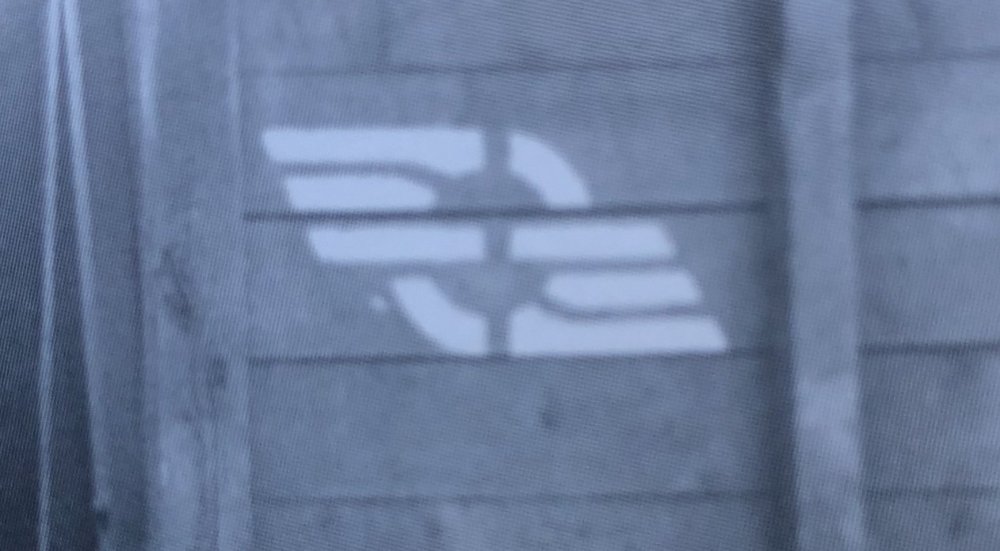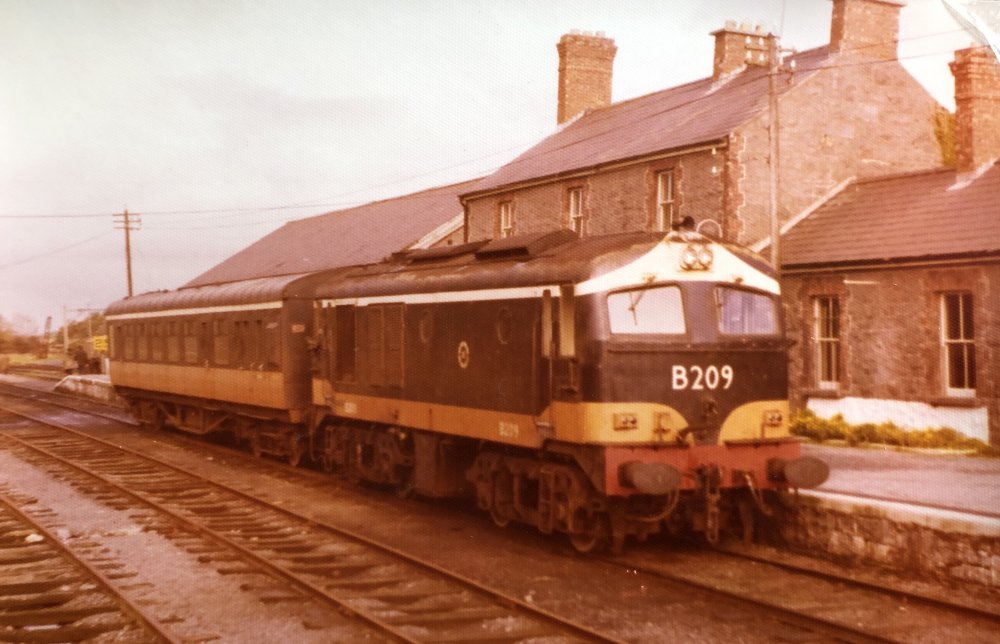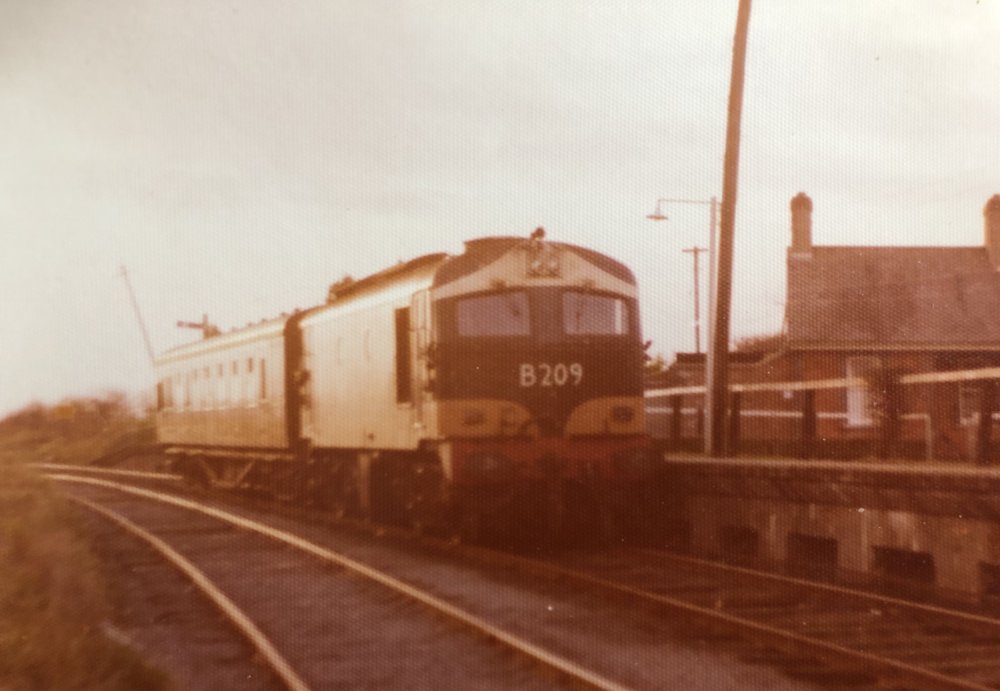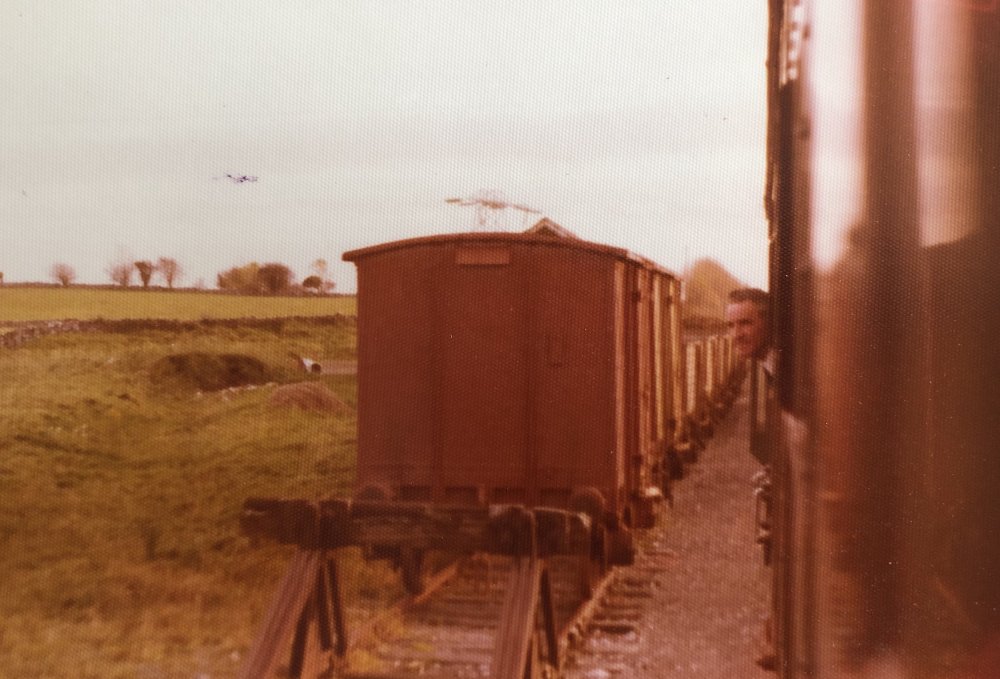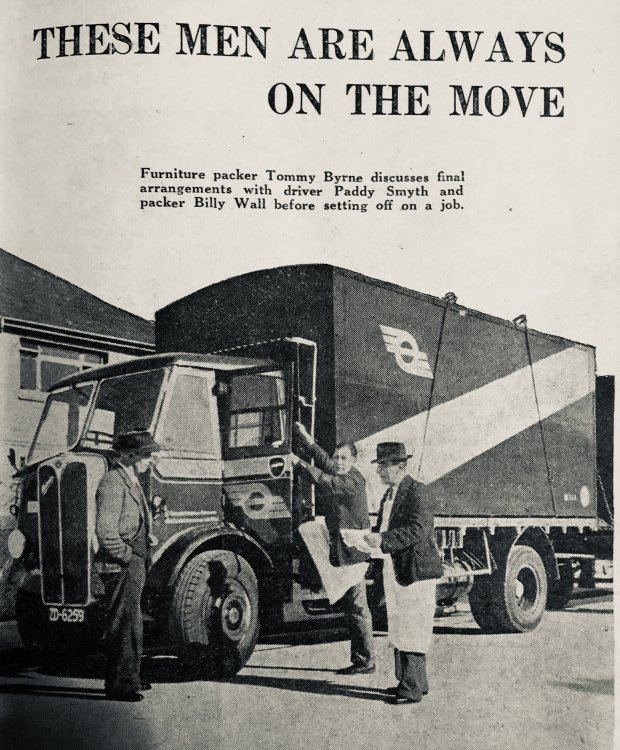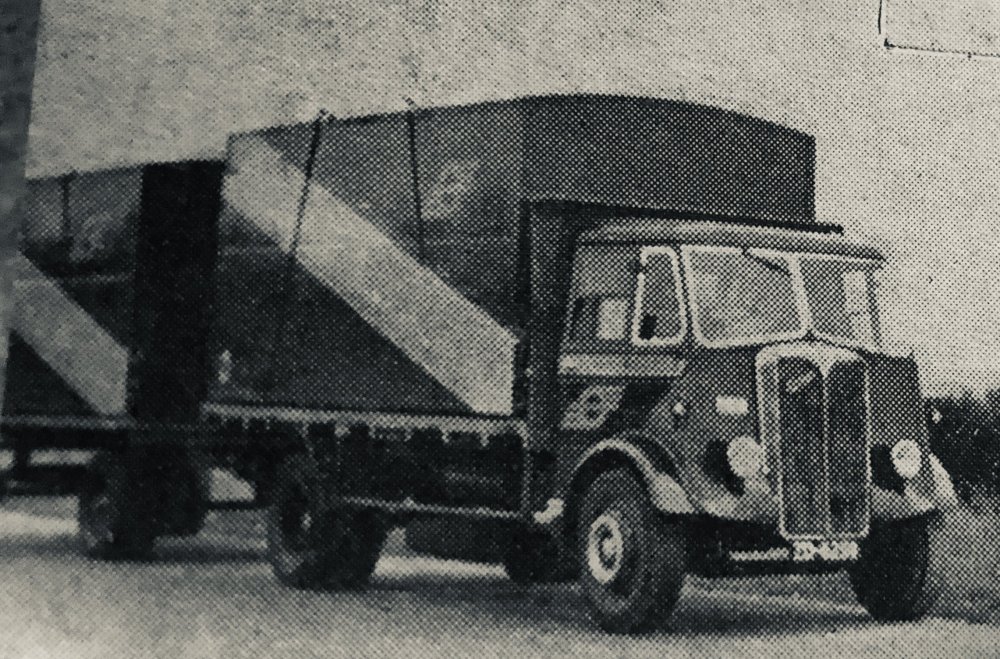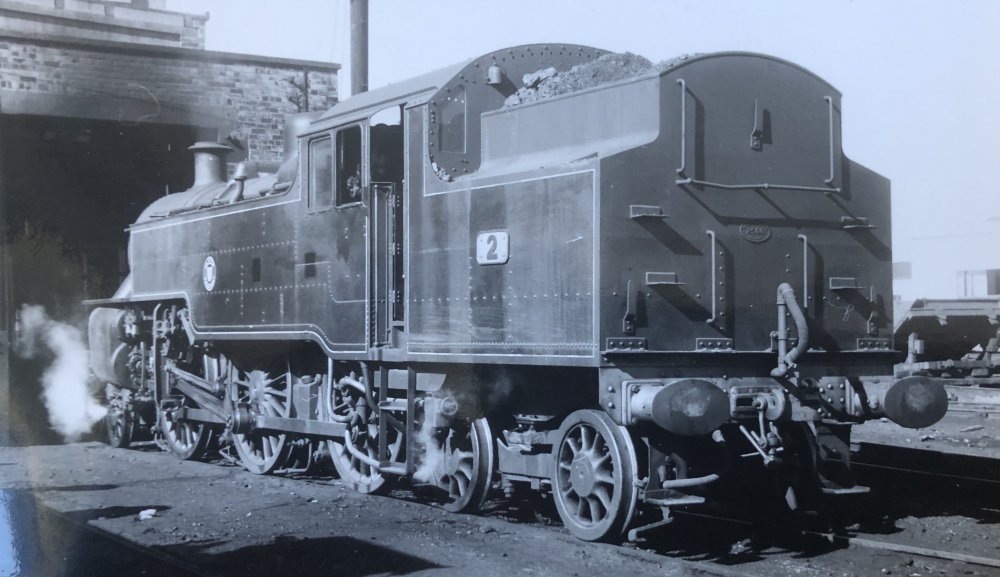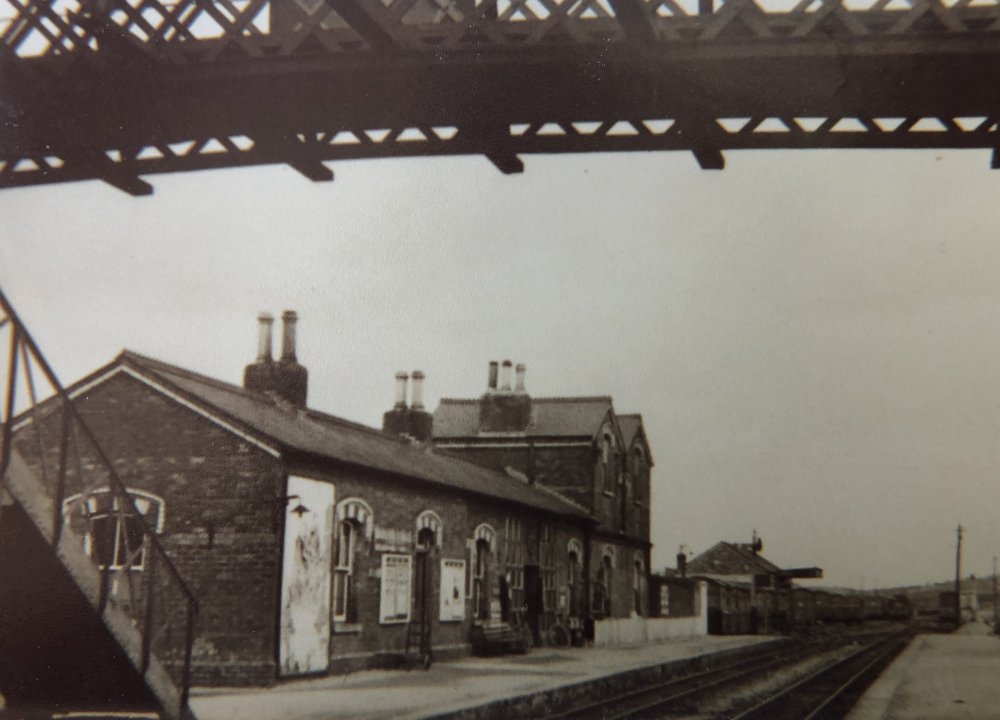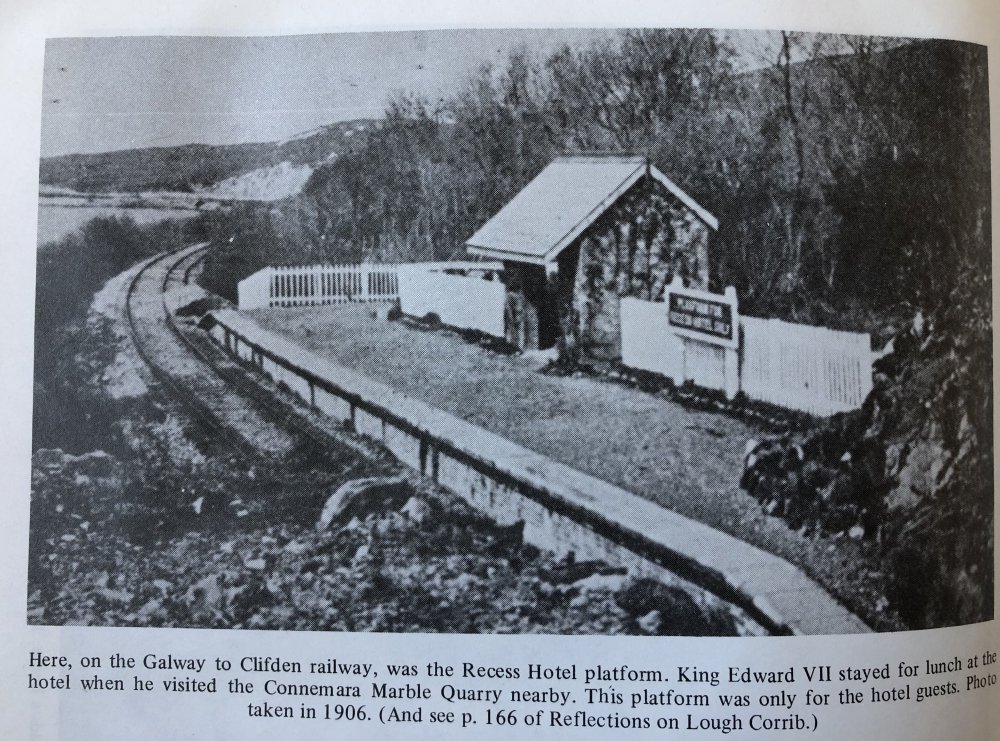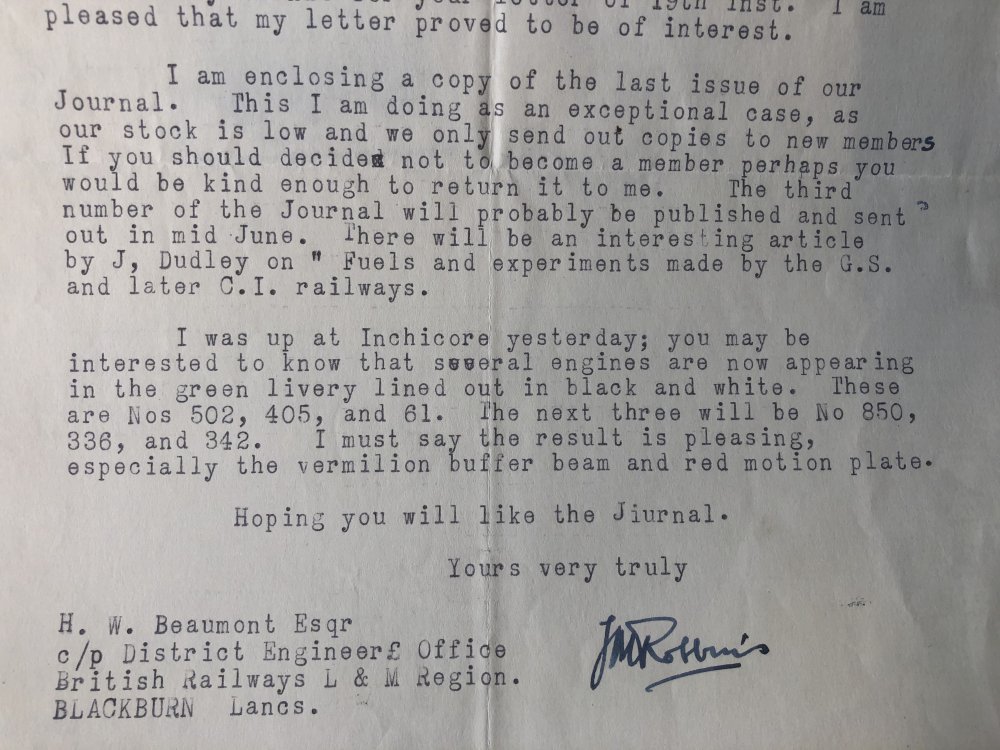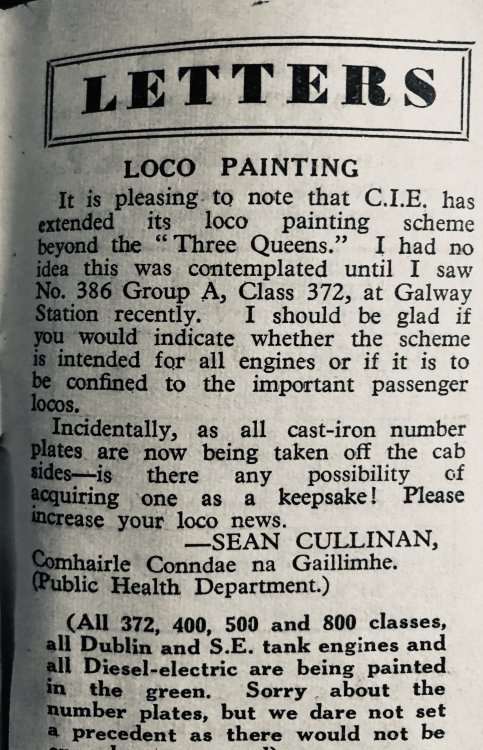-
Posts
15,833 -
Joined
-
Last visited
-
Days Won
393
Content Type
Profiles
Forums
Events
Gallery
Blogs
Store
Community Map
Everything posted by jhb171achill
-
-
Wow! That was quick!
-
I think it may have been 80, but whichever it was, the green on the Jeep was evidently something not unlike what’s on No. 30 in Cultra, or possibly a slightly darker version of the Isle of Man’s 1970s green. The mogul was some sort of olive green, possibly a bit like the Southern in England. The 4.4.0 was something different again, so it might well have been a “Brunswick” green - possibly similar to CIE green, even. It would have varied from what BR has due to (as far as I can tell) yellow lining.
-
Forty five years ago, the sun went down on a chapter in Irish railway history, when the last rural branch line with traditional mixed trains closed. And as the winter sun went down on a bitterly cold but bright afternoon, two days before the closure, I took these. So now the sun must go down on me posting daily pictures, as I need to get more scanned..... 1. Arrival at Loughrea, behind a “C”. A big disappointment that day - sure you can get an oul “C” class to Bray ANY day. I had hoped for a “G” - but it had been removed - for ever at this point - and sent to Tuam to shunt the sugar factory sidings during the winter’s beet “campaign”. (Where did they get that odd terminology for a beet harvest?). By the time the beet was finished a few months later, the “G” would now be homeless.... 2. The sun sets on the last train of the day, on the last branchline, with just two days to go. This is actually a mixed train but there happened to be no goods that day. 3. A goods van in the siding at Dunsandle, en route. Hope you’ve enjoyed the photos, folks.
-
The shade of green is unknown, yes, and I note that the mogul does not by this stage have “U T” on the tender. I had been told “some weeks” by Senior, who was told by the NCC’s Harold Houston, who of course was behind its introduction. Certainly the Jeep didn’t have it long.
-
It was a really nice job, Nelson. How is your layout going?
-
Yes - either that or the BTC directly - not BR, into whose stable it never went.
-
I think that what would become BR hadn't yet formalised a livery either, so they were all experimental. The other two painted green would not have had crests either; the Mogul had "U T" on its tender - I've seen a b & w pic of it. It must be assumed No. 5 did too. In any event, these liveries were repainted apparently after only some weeks, to standard UTA black lined in red & straw, At that stage only, the UTA crest as seen on the pic was added. I had forgotten about the 4.4.0, right enough.
-
Interesting where the depots were!
-
I have a copy of that somewhere, Derailed, yes! Thank you anyway!
-
I'm unaware of any 4.4.0s getting the green treatment.....? Must delve..............
-
Correct! Correct! It's still in its original postwar LMS lining. The first batch of "jeeps" were delivered in this LMS NCC style, with block letters "N C C" when the UTA crest and the two black paint patches are. The later ones, in the 50-series, were only ever in UTA livery. Here, No. 2 still has the single straw-beige coloured line with maroon outside it. But the "N C C" has been painted out and a new UTA crest put on. I am unaware of any other picture of this happening, as apart from the rapid application of the crests to navy & cream GNR railcars in 1959, the UTA seemed to make a good job of properly repainting locos, even if they didn't look after them quite as well after that. None were ever painted into UTA green as such - the UTA loco livery was always black - however - what you may mean (I'm guessing?) is the short-lived experimental liveries about that time? "Jeep" No. 5 very briefly had an experimental green about 1952, but it was far removed from the standard UTA green. One of the 2.6.0 "Moguls" was given it too. Apparently, it was similar to the (completely non-authentic) lightish mid-green on the BCDR loco (No. 30) in Cultra. It didn't last - a "proper" coat of lined black soon followed. No. 2, above, was always black.
-
This turned up in an old “Cuisle” magazine. CIE built some of these for their furniture removal business in the 1940s / 50s. Usually with road vehicles the cab sections were the usual green livery, with the goods-carrying section in wagon grey. However, these things were all green, the diagonal stripe being the light green as on carriage lining. The reversed “snail” on the driver’s side (same on that side of steam loco tenders and buses) will be noticed on the one side.
-
May 1950, York Road. Yeah, it’s “just a Jeep”. Look closer! What’s particularly interesting about this picture of No. 2?
-
I like the finish you've ended up with on the walls. It looks very good for an old stone building which has been whitewashed over countless times in a century and a half!
-
Proper order too - in real life they WOULD have looked shabby almost all of the time! Pristine shiny goods wagons weren’t exactly common in the past....
-
From which book are the livery descriptions?
-
Yes, now I'm looking at it on the "big" computer rather than the ipad, that is very clear. Thus, the mystery is solved. It is very definitely a weedspray train. But where!
-
Certainly looks like it, Ernie - however - while clearly it's an old six-wheeled coach chassis, the side showing on your pic appears to have still got three doorsteps, whereas none are visible on the original photo above. Therefore, unless what looks like steps on your pic are actually not, then that leaves the possibility that either its a slightly different vehicle (which I doubt), or there were only steps left on one side (more likely).
-
Stations, and a question. The first needs no introduction - Ballinamore in GSR days. The second is the short-lived Recess Hotel platform on the Clifden line. This came from an old out-of-print book in the history of Galway. I have it ready to go into the Clifden book but I need a much better quality copy, ideally the negative source. It does not appear in listings for the Lawrence / Welch collections. Has anyone of the historical community here got any idea where at least a better copy might be?
-
That's exactly the way to go! Anyone's layout is what they want it to be.... I think they look superb, Tony. I'd say Railtech can come up with anything you need transfer-wise, judging by anecdotal evidence here.
-
I have updated the tables I did at the start of this thread with relevant info gleaned from the above.
-
Possibly - hard to be 100% certain.
-
In relation to the painting of things green, I found the following. First, a letter to Senior from J Macartney Robbins detailing some livery aspects, and secondly a letter published in “Cuisle” in 1947 from an obvious enthusiast - being very much a case of “plus ca change”.... Were they actually made by Bassett Lowke or was this just a “headline” name? I’m unaware of any reviews of them, but a very fine looking beast.
-
That is quite possible, airfixfan, though if so it's not the normal one. If it IS a weedspray, it's going to be somewhere on the INW line. I'm actually thinking you're probably right.
.png.c363cdf5c3fb7955cd92a55eb6dbbae0.png)

